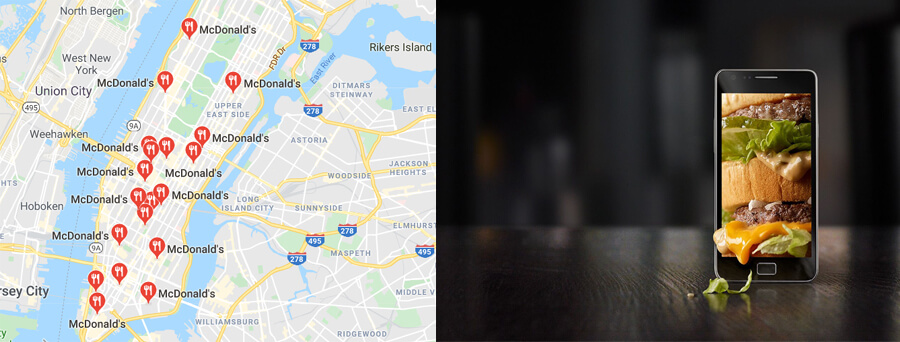Geotargeting: How it improves CTR
Written by Roy
Sep 26, 2020 • 4 min read
Geotargeting of digital media is a method to target ads to visitors from different geographical locations. It's a widely used targeting method used by Adwords and Facebook to restrict ads to be seen only by users located in specific countries or regions.
Most third-party ad servers let you geotarget your audience by:
Why are we using it?
If the ad copy is written in Georgian, it doesn't make sense to show it to people who don't speak that language. You probably don't want to show ads for expensive Rolex watches in countries that have average wages of around $100/month. And why would someone promote a service worldwide that's only available in a handful of countries?
Geotargeting allows you to optimize the ad's budget by delivering ads to users who are most likely to convert.
How is the visitor's location determined?
The user's physical location is commonly determined by using a large database containing IP to Location data. These databases are updated routinely, containing detailed information about each subnet of IP information like the country, region, city, timezone, coordinates, etc. AdGlare is using MaxMind's GeoIP2 City Database - one of the leaders in geolocation technology.
A snippet of an IP to Location database.
Best practices to increase CTRA commonly used strategy is to let your campaign running for a moment without geotargeting enabled. Then, generate a report by country and sort the list by clicks, CTR or conversions, based on your metric of interest. Now target only the top X best-performing countries. The campaign will get fewer impressions, but will improve CTR and increases engagement.
What about hyperlocal targeting?
Ever seen an ad of MacDonald's on your phone while there's one just around the corner? That's hyperlocal targeting in action. Some ads even show you the directions on a map to get you there, before your Big Mac gets cold. 
Hyperlocal Targeting: based on your phone's GPS coordinates.
The exact GPS position of a user may be known if that person has granted a web page access to the phone's location. The web page first asks if the user wants to share its location. Once approved, the exact GPS location can be sent to the ad server. Geotargeting can now be performed with incredibly high precision, allowing to target visitors who are 200 feet away from a certain store. 
Web page asking to share your GPS coordinates.
Be careful: GDPR/CCPA
Europe's General Data Protection Regulation law prohibits processing or storing personally identifiable information without user consent. It's therefore imperative that the user cannot be identified when determining its location. One way of doing so is to make sure that the resolution is low enough, like targeting at city level. Cities usually contain more than one person and thus one would not be able to match the location to an individual.If you're using hyperlocal targeting, you may want to follow Google's policy to round latitudes/longitudes to 2 decimals. This translates to a radius of ~1 km. •••
Download this article as PDF?
No time to read the whole article? Download a free PDF version for later (no email required): Permalink
To link to this article, please use: External Resources |